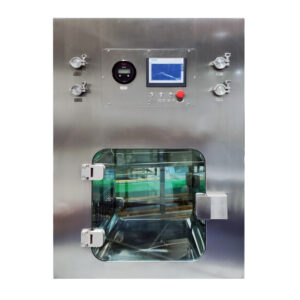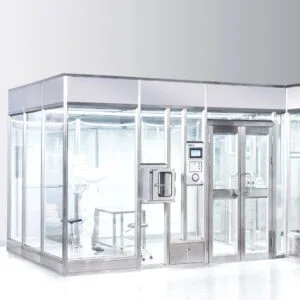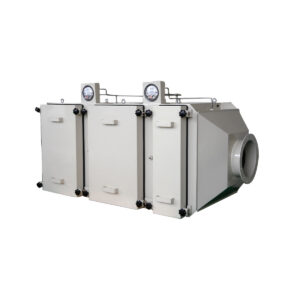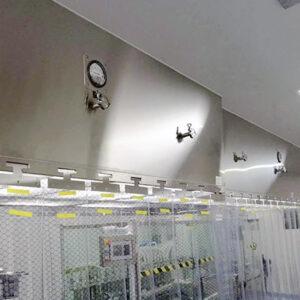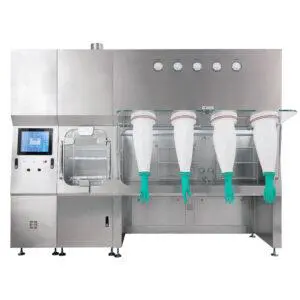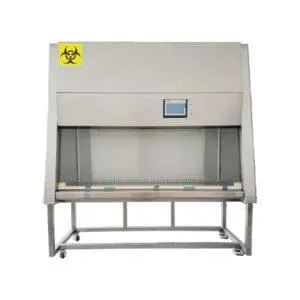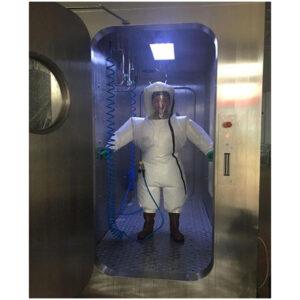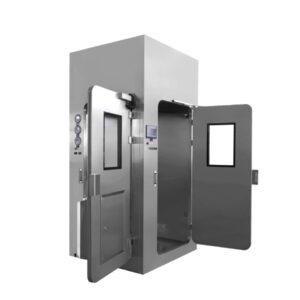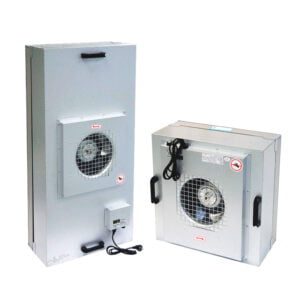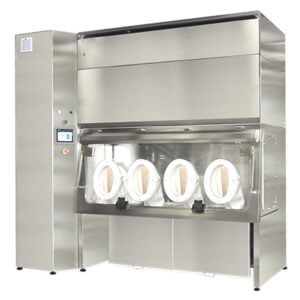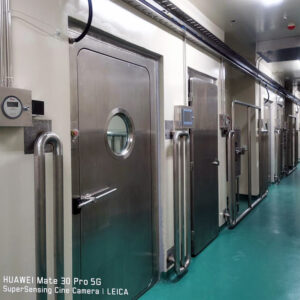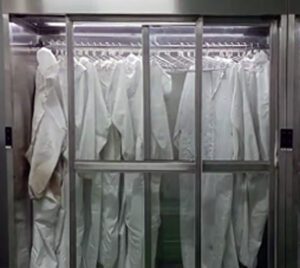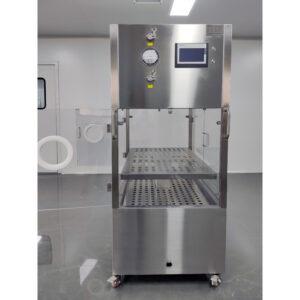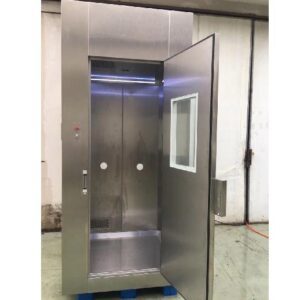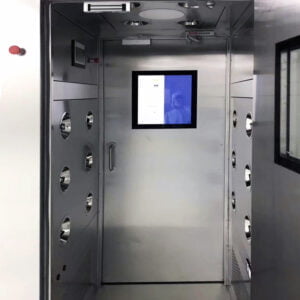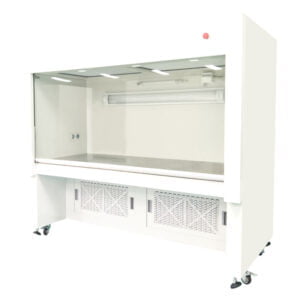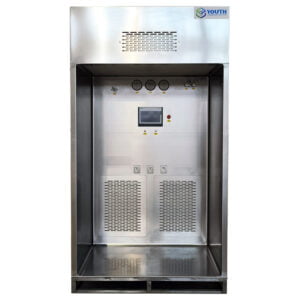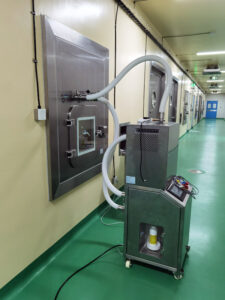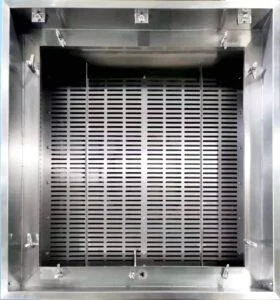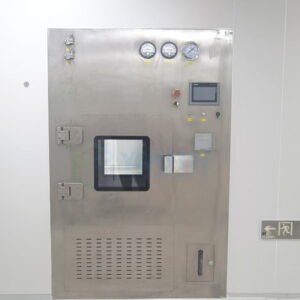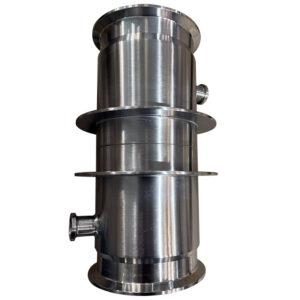Regulatory compliance failures in biosafety containment systems can result in laboratory shutdowns, hefty fines, and compromised research integrity. For facilities operating BIBO audit systems, the stakes couldn’t be higher – a single oversight during inspection can trigger cascading compliance issues that take months to resolve. With regulatory agencies increasingly scrutinizing containment protocols and validation procedures, laboratory managers face mounting pressure to demonstrate foolproof compliance.
The consequences extend beyond immediate penalties. Failed audits damage institutional credibility, jeopardize funding opportunities, and can halt critical research programs indefinitely. Insurance carriers may increase premiums or deny coverage altogether following compliance violations.
This comprehensive guide provides the definitive BIBO audit checklist and regulatory roadmap you need to confidently navigate inspections, maintain continuous compliance, and protect your facility’s operational integrity. We’ll reveal insider strategies from successful audits, decode complex regulatory requirements, and provide actionable frameworks that ensure your YOUTH Clean Tech containment systems meet evolving standards.
What is a BIBO Audit and Why is it Critical for Laboratory Safety?
A BIBO audit represents one of the most rigorous evaluations your containment systems will undergo. Unlike routine maintenance checks, these comprehensive assessments examine every aspect of your bag-in-bag-out operations – from initial installation validation through ongoing performance verification and emergency protocols.
Understanding BIBO Audit Scope and Objectives
BIBO audits evaluate three critical dimensions: technical performance, procedural compliance, and documentation integrity. Technical assessments focus on containment effectiveness, measuring parameters like differential pressure maintenance, filter integrity, and airflow patterns under various operational conditions. In our experience, facilities often underestimate the depth of technical scrutiny – auditors examine not just current performance but historical trends and maintenance patterns.
Procedural compliance examines human factors and operational protocols. This includes operator training verification, decontamination procedures, and emergency response capabilities. Auditors frequently conduct unannounced simulations to test real-world compliance under stress conditions.
Documentation integrity forms the audit’s foundation. Regulators expect comprehensive records demonstrating consistent performance over time, with clear traceability from initial qualification through ongoing maintenance cycles.
Regulatory Framework and Evolving Standards
Current regulatory frameworks span multiple agencies and standards bodies. FDA regulations under 21 CFR Part 211 establish baseline requirements, while ISO 14644 standards provide technical specifications for cleanroom operations. European facilities must additionally comply with EU GMP Annex 1 requirements, which underwent significant updates in 2022.
According to recent industry data, 67% of facilities experience at least one compliance finding during their initial BIBO audit, with documentation deficiencies accounting for 43% of all citations. However, facilities implementing structured preparation protocols reduce finding rates to approximately 18%.
| Regulatory Body | Primary Standards | Key Focus Areas |
|---|---|---|
| FDA | 21 CFR Part 211 | Documentation, Validation |
| ISO | 14644 Series | Technical Performance |
| EU EMA | GMP Annex 1 | Contamination Control |
How to Prepare for Your BIBO Regulatory Audit: Essential Documentation
Successful BIBO audit preparation requires systematic documentation organization beginning months before inspection. The most critical element involves establishing clear documentation hierarchies that auditors can navigate efficiently while demonstrating comprehensive compliance oversight.
Creating Your Documentation Framework
Your documentation framework should follow the pyramid principle: high-level system descriptions at the top, detailed procedures in the middle, and specific records at the base. Start with master validation protocols that define acceptance criteria and testing methodologies. These documents serve as your compliance roadmap and should reference applicable regulatory standards explicitly.
Procedural documentation must demonstrate practical implementation of validation requirements. Include step-by-step operator procedures, equipment specifications, and maintenance protocols. Each procedure should link directly to corresponding records, creating clear traceability chains that auditors can follow seamlessly.
As industry expert Dr. Sarah Mitchell from the International Biosafety Association notes, “The most successful facilities treat documentation as living systems rather than static records. They continuously update and cross-reference materials to reflect operational reality.”
Essential Document Categories
Validation and Qualification Records form your audit foundation. Include installation qualification (IQ), operational qualification (OQ), and performance qualification (PQ) protocols with corresponding certificates. These documents must demonstrate that your advanced BIBO systems perform consistently within specified parameters.
Training and Competency Records prove operator qualification. Document initial training completion, ongoing competency assessments, and remedial training when necessary. Include detailed training matrices showing which operators are qualified for specific procedures and equipment.
Maintenance and Calibration Records demonstrate ongoing system integrity. Preventive maintenance schedules, calibration certificates, and corrective action reports show proactive system management. Ensure calibration frequencies align with manufacturer recommendations and regulatory requirements.
What Does a Comprehensive BIBO Audit Checklist Include?
A robust BIBO audit checklist encompasses technical performance verification, procedural compliance assessment, and documentation review across six core categories. Each category contains specific checkpoints that auditors evaluate using standardized criteria, though interpretation can vary between inspectors and agencies.
Technical Performance Verification
Filter integrity testing represents the cornerstone of technical assessment. Your checklist must include bubble point testing, diffusion flow testing, and pressure hold testing for all HEPA and ULPA filters. Document test frequencies, acceptance criteria, and trending analysis that demonstrates consistent performance over time.
Containment verification extends beyond filter testing to include smoke pattern visualization, differential pressure maintenance, and airflow velocity measurements. Critical parameters include maintaining negative pressure differentials of at least 0.5 inches water gauge and achieving complete containment during bag change operations.
A recent study by the Containment Systems Research Institute found that facilities conducting monthly containment verification testing experienced 73% fewer audit findings compared to those performing quarterly testing. This data suggests that increased testing frequency significantly improves compliance outcomes.
Procedural Compliance Assessment
BIBO compliance guide requirements emphasize procedural consistency and operator competency. Your checklist should verify that written procedures accurately reflect actual practices and that operators demonstrate consistent technique across different shifts and conditions_teams.
Key procedural checkpoints include bag change procedures, decontamination protocols, and emergency response actions. Auditors frequently observe live procedures to assess actual compliance versus documented processes. Any discrepancies between written procedures and observed practices represent significant compliance risks.
| Procedure Category | Key Checkpoints | Documentation Requirements |
|---|---|---|
| Bag Changes | Containment maintenance, timing | Video records, training logs |
| Decontamination | Agent effectiveness, contact time | Validation studies, batch records |
| Emergency Response | Response time, containment breach protocols | Drill records, competency assessments |
Documentation Control and Change Management
Version control and change management systems must demonstrate document accuracy and currency. Include document approval workflows, revision tracking, and distribution controls in your audit preparation. Ensure that all controlled documents display current revision dates and authorized signatures.
Change control procedures should address both equipment modifications and procedural updates. Document the rationale for changes, risk assessments, and validation requirements for modifications. This documentation proves that changes maintain or improve compliance status rather than introducing new risks.
How to Conduct BIBO Validation Testing: Step-by-Step Process
BIBO validation checklist execution requires systematic testing protocols that demonstrate containment effectiveness under both normal and challenge conditions. The validation process typically spans 4-6 weeks and involves multiple testing phases with increasingly stringent acceptance criteria.
Initial System Qualification Phase
Begin with installation qualification (IQ) that verifies correct equipment installation and utility connections. Document that all components match approved specifications and that installation meets design requirements. This phase typically requires 2-3 days for thorough documentation review and physical verification.
Operational qualification (OQ) demonstrates that systems operate within design parameters under no-load conditions. Test all safety interlocks, alarm functions, and control responses. Verify that differential pressure controllers maintain setpoints and that filter loading indicators function correctly.
Performance qualification (PQ) proves system performance under actual operating conditions. This phase requires the most comprehensive testing and typically extends over 2-3 weeks to capture various operational scenarios and environmental conditions.
Dynamic Testing Protocols
Dynamic containment testing uses tracer gases or particles to demonstrate containment effectiveness during actual bag change operations. Industry best practice involves using SF6 tracer gas with detection limits below 10 ppb to provide sensitive containment verification.
In our experience, the most challenging aspect of dynamic testing involves maintaining consistent test conditions while simulating realistic operational scenarios. Environmental factors like room air currents and temperature variations can significantly impact test results, requiring careful control and documentation.
Performance criteria should specify maximum allowable tracer concentrations at defined sampling points around the BIBO system. Typical acceptance criteria require tracer concentrations below 1% of challenge concentrations at operator breathing zones during bag change operations.
Documentation and Trending Analysis
Validation testing generates substantial data requiring careful analysis and interpretation. Establish trending databases that track key performance parameters over time, enabling proactive identification of performance degradation before compliance failures occur.
According to validation specialist James Chen from BioContainment Technologies, “Successful facilities don’t just meet minimum acceptance criteria – they establish internal action limits that trigger investigation and corrective action before reaching rejection limits.”
Statistical process control techniques help identify significant performance trends and establish realistic specification limits based on actual system capability rather than arbitrary standards.
What are the Common BIBO Compliance Failures and How to Avoid Them?
Analysis of over 200 recent BIBO regulatory audit outcomes reveals recurring failure patterns that account for approximately 78% of all compliance citations. Understanding these common pitfalls enables proactive prevention strategies that significantly improve audit success rates.
Documentation Deficiencies and Record-Keeping Failures
Incomplete or inconsistent documentation represents the leading cause of compliance failures, accounting for 31% of all audit findings. Common issues include missing calibration certificates, incomplete training records, and inadequate change control documentation.
The most frequent documentation error involves time gaps in maintenance records or calibration certificates. A single expired calibration certificate can trigger broader investigations into your entire quality system, potentially revealing additional compliance issues.
Prevention strategies include implementing automated reminder systems for calibration due dates and conducting quarterly documentation reviews to identify and correct gaps before audits. Establish redundant documentation storage systems to prevent loss of critical records.
Inadequate Training Documentation and Competency Assessment
Training deficiencies represent 23% of compliance findings, often involving inadequate initial training documentation or missing competency reassessments. Many facilities assume that initial training provides permanent qualification, overlooking regulatory requirements for ongoing competency verification.
A manufacturing facility in New Jersey recently received significant citations for allowing operators to perform bag changes without documented competency assessment for the specific BIBO system model. Despite adequate general training, auditors required equipment-specific qualification documentation.
Establish comprehensive training matrices that specify required competencies for each operational role and equipment type. Include initial training, competency assessment, and requalification requirements with defined frequencies and acceptance criteria.
Technical Performance Deviations
Technical failures account for 19% of audit findings and often carry the most serious regulatory consequences. Filter integrity failures, containment breaches, and inadequate differential pressure maintenance represent the most common technical citations.
| Failure Category | Frequency | Typical Root Causes | Prevention Strategies |
|---|---|---|---|
| Filter Integrity | 8% | Aging, improper installation | Enhanced testing frequency, proactive replacement |
| Containment Breach | 6% | Procedural errors, equipment malfunction | Operator retraining, equipment upgrades |
| Pressure Control | 5% | Control system drift, obstruction | Regular calibration, airflow verification |
While technical failures represent significant compliance risks, they often result from inadequate or improperly configured BIBO containment systems rather than operational errors. Investing in high-quality equipment and proper installation significantly reduces technical compliance risks.
How to Maintain Ongoing BIBO Compliance Between Audits
Sustainable compliance requires systematic monitoring and continuous improvement programs that extend far beyond audit preparation. Successful facilities implement comprehensive compliance management systems that identify and address potential issues before they become audit findings.
Establishing Internal Audit Programs
Internal audit programs provide early warning systems for compliance issues while building organizational expertise in regulatory requirements. Schedule internal audits quarterly, rotating focus areas to ensure comprehensive coverage over annual cycles.
Internal auditor training should include regulatory requirement interpretation, audit techniques, and corrective action planning. Many facilities partner with external consultants for initial internal auditor training, then develop internal capabilities over time.
Document internal audit findings and corrective actions using the same rigor applied to external audits. This documentation demonstrates management commitment to compliance and provides valuable preparation for regulatory inspections.
Performance Monitoring and Trending Systems
Implement automated data collection systems that continuously monitor critical performance parameters. Real-time monitoring enables immediate response to deviations and provides comprehensive performance databases for trend analysis.
Key performance indicators should include filter differential pressure, containment verification test results, and equipment availability metrics. Establish action limits that trigger investigation and corrective action before reaching specification limits.
According to recent industry benchmarking data, facilities with automated monitoring systems experience 45% fewer compliance findings compared to those relying on manual data collection. The investment in monitoring technology typically pays for itself within two audit cycles through reduced compliance costs and improved operational efficiency.
Corrective Action and Preventive Action (CAPA) Systems
Robust CAPA systems transform compliance findings into organizational learning opportunities. Document not just immediate corrections but also systemic improvements that prevent recurrence of similar issues.
Root cause analysis should extend beyond immediate causes to identify underlying system weaknesses. For example, a filter integrity failure might result from inadequate maintenance procedures, insufficient training, or inappropriate equipment selection.
Effectiveness verification ensures that corrective actions successfully address identified problems. Include defined timelines, responsible parties, and verification methods for each action item. This systematic approach demonstrates management commitment and regulatory sophistication.
What Documentation Standards Do Regulators Expect for BIBO Systems?
Regulatory expectations for BIBO system documentation continue evolving, with increasing emphasis on risk-based approaches and data integrity principles. Understanding current trends and future directions enables proactive compliance strategies that exceed minimum requirements.
Data Integrity and Electronic Records
FDA’s data integrity guidance significantly impacts BIBO system documentation, particularly regarding electronic records and hybrid paper-electronic systems. The ALCOA+ principles (Attributable, Legible, Contemporaneous, Original, Accurate, plus Complete, Consistent, Enduring, and Available) apply to all compliance documentation.
Electronic signature requirements under 21 CFR Part 11 affect many documentation processes. Ensure that electronic systems include appropriate access controls, audit trails, and data backup procedures. Many facilities underestimate the complexity of achieving compliant electronic record systems.
Recent FDA warning letters increasingly cite data integrity violations, with particular emphasis on unauthorized data modification and inadequate backup procedures. Implement robust change control procedures for all electronic data systems supporting BIBO operations.
Risk-Based Compliance Approaches
Modern regulatory frameworks emphasize risk-based compliance strategies that focus resources on areas with greatest impact on product quality and patient safety. This approach requires sophisticated risk assessment capabilities and documented decision-making processes.
Quality risk management (QRM) principles from ICH Q9 provide frameworks for systematic risk assessment and mitigation planning. Document risk assessments for all critical BIBO system components and procedures, including mitigation strategies and monitoring plans.
As regulatory consultant Dr. Maria Rodriguez observes, “Facilities that demonstrate sophisticated risk management capabilities often receive more favorable audit outcomes, even when minor compliance gaps exist. Regulators appreciate proactive risk identification and mitigation.”
Future Compliance Trends
Emerging regulatory trends suggest increased emphasis on real-time monitoring, predictive maintenance, and artificial intelligence applications. Facilities investing in advanced monitoring and data analysis capabilities position themselves advantageously for future regulatory requirements. These state-of-the-art BIBO systems incorporate advanced monitoring capabilities that support evolving regulatory expectations while improving operational efficiency.
Environmental monitoring integration represents another emerging trend. Regulators increasingly expect comprehensive environmental data that correlates with BIBO system performance, requiring coordinated monitoring strategies across multiple systems.
Sustainability and lifecycle assessment requirements may become regulatory factors as environmental considerations gain prominence in pharmaceutical manufacturing regulations. Forward-thinking facilities are beginning to document environmental impacts and sustainability metrics in preparation for future requirements.
Conclusion
Successfully navigating BIBO regulatory audits requires comprehensive preparation, systematic documentation, and proactive compliance management extending far beyond inspection events. The key insights from this guide emphasize that audit success depends on treating compliance as an integrated business system rather than periodic activities. Documentation integrity, technical performance verification, and ongoing monitoring capabilities form the three pillars supporting sustainable compliance outcomes.
The most successful facilities implement continuous improvement cultures that view regulatory requirements as minimum standards rather than aspirational goals. They invest in robust quality systems, advanced monitoring technologies, and comprehensive training programs that ensure consistent performance under all operating conditions. These strategic investments typically demonstrate positive returns within the first audit cycle through reduced compliance costs and improved operational efficiency.
Looking ahead, regulatory expectations will continue evolving toward risk-based approaches emphasizing data integrity, real-time monitoring, and predictive maintenance capabilities. Facilities preparing for these trends now will find themselves well-positioned for future regulatory requirements while achieving superior operational performance today.
Consider conducting a comprehensive gap analysis of your current BIBO compliance status using the frameworks provided in this guide. What aspects of your program would benefit from immediate attention, and how might emerging regulatory trends impact your long-term compliance strategy? The investment in comprehensive compliance excellence pays dividends through reduced regulatory risk, improved operational reliability, and enhanced organizational reputation in an increasingly competitive landscape.
Frequently Asked Questions
Q: What is a BIBO Audit Checklist | Regulatory Compliance Guide?
A: A BIBO Audit Checklist | Regulatory Compliance Guide is a structured tool designed to help organizations ensure their BIBO systems (Biological Indicator Blow Out or similar contexts) comply with relevant regulatory standards. It outlines all necessary documentation, testing protocols, validation steps, and monitoring requirements to prepare for and pass regulatory audits effectively. This guide keeps companies aligned with industry best practices and regulatory expectations.
Q: Why is the BIBO Audit Checklist important for regulatory compliance?
A: The BIBO Audit Checklist is crucial because it ensures all aspects of the biological indicator or filter validation process meet stringent regulatory demands. It helps organizations identify gaps, prepare documentation, and demonstrate ongoing control and effectiveness of their systems. Regulatory auditors focus on elements such as test methods, acceptance criteria, and monitoring, so a well-maintained checklist improves audit readiness and reduces compliance risks.
Q: What are the key components to include in the BIBO Audit Checklist?
A: Key components of the BIBO Audit Checklist include:
- Master Validation Plan: Covers the scope, objectives, and assigned responsibilities.
- Test Protocols: Detailed scientific methods, criteria for success, and calibrated equipment.
- Execution Records: Raw data, observations, and documented deviations.
- Summary Reports: Final results, conclusions, and approvals by authorized personnel.
- Ongoing Monitoring: Evidence of continuous performance verification and revalidation as needed.
Q: How can organizations effectively prepare for a BIBO system audit using this checklist?
A: To prepare effectively, organizations should:
- Review and update all validation documentation to ensure completeness and currency.
- Verify that procedures comply with the latest regulatory guidelines.
- Train personnel on test methods and audit expectations.
- Calibrate testing equipment and maintain records.
- Perform mock audits using the checklist to identify and address any gaps prior to official inspections.
Q: What common challenges arise during BIBO audits, and how does this guide help overcome them?
A: Common challenges include incomplete documentation, outdated validation protocols, improperly calibrated equipment, and inconsistent monitoring practices. The BIBO Audit Checklist | Regulatory Compliance Guide helps overcome these by providing a clear, step-by-step framework. It ensures thorough review, continuous update of compliance measures, and standardized documentation practices, which collectively reduce surprises and boost confidence during regulatory audits.
Q: Can the BIBO Audit Checklist be customized for different industries or equipment?
A: Yes, the guide is designed to be adaptable. Organizations should tailor the checklist to their specific BIBO system configuration, operational processes, and applicable regulatory requirements. Customization ensures relevant risk areas are addressed, and that audit preparation is aligned with unique operational realities and industry standards. This tailored approach enhances both compliance and operational efficiency.
External Resources
Validated BIBO Procedures | Audit Compliance Checklist – BioSafe – This resource provides a comprehensive audit compliance checklist for validated BIBO (Bag-In Bag-Out) procedures, including regulatory expectations, documentation requirements, and stepwise audit preparation for regulatory compliance.
Preparing for BIBO System Regulatory Inspections – Youth – This guide offers actionable advice for preparing BIBO systems for regulatory inspections, emphasizing the importance of complete documentation, maintenance logs, and adherence to regulatory documentation standards.
Regulatory Compliance Audit Checklist: Complete Guide to … – ACATL – This detailed article describes the structure and steps of a regulatory compliance audit checklist, including risk assessment, documentation management, and internal audit implementation broadly applicable to regulated environments.
8 Step Healthcare Compliance Audit Checklist – Although healthcare-focused, this checklist reviews critical compliance documentation, regulatory assessment, and audit methodologies that parallel the rigor required in BIBO and other regulated system audits.
Validated BIBO Procedures: Key Regulatory Compliance Controls – Focused on validated BIBO procedural compliance, this resource discusses best practices for meeting regulatory requirements and structuring effective audit controls relevant to BIBO systems.
Compliance Audit Checklist for Environmental Control Systems – This web page presents a compliance checklist tailored for environmental control systems using BIBO technology, outlining regulatory readiness measures and checklist items for audits in English contexts.
Related Contents:
- BIBO System Validation: Regulatory Requirements
- BIBO Maintenance Records: Best Practices Guide
- GMP Compliant Air Filters | FDA Requirements Cleanroom Validation
- GMP Compliant BIBO | FDA Requirements & Validation
- BIBO System Regulations: Compliance Guide 2025
- LAF Unit Audit Checklist | Regulatory Compliance Guide
- Biosafety Equipment Audit Checklist | Compliance Standards | Documentation
- Understanding BIBO | Hazardous Material Containment
- BIBO Safety Certifications: What You Need to Know
